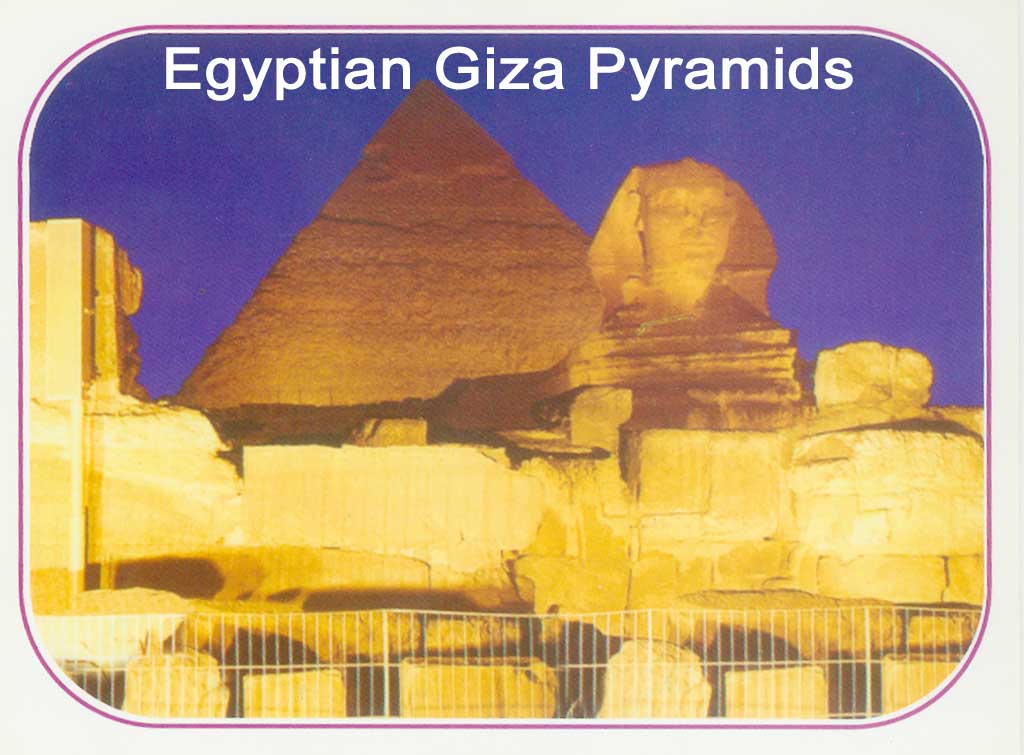The Great Pyramid of Giza Khufu’s Big, Timeless Monument
The Great Pyramid stands as the most famous of the ancient wonders: a mountain of stone shaped into precise geometry, built for a king named Khufu (Cheops). It is the image most people call to mind when they think of pyramids the Big Pyramid, the Cheops Pyramid, the Khufu Pyramid and its presence on the Giza Plateau has defined the Egyptian horizon for millennia.
Great Pyramid location
The Great Pyramid’s location is the Giza Plateau, a limestone ridge just west of the modern city of Cairo. The site was chosen for visibility, proximity to the Nile transport routes, and its relationship to the ancient capital at Memphis. Standing on the edge of the desert, the Pyramid of Giza appears as both a territorial marker and a ritual monument it anchors the landscape.
Pyramid Khufu Khufu Pyramid
When we say “Khufu Pyramid,” we mean the pyramid commissioned by Pharaoh Khufu, the ruler of Egypt’s Fourth Dynasty. Khufu’s ambition produced the tallest stone structure of the ancient world. In Egyptian inscriptions and archaeological context his project reflects centralised planning and a skilled workforce organized to move millions of blocks into place.
Great Pyramid location
Khufu Pyramid
Pyramid Khufu
Great Pyramid of
Great pyramid of Giza Khufu
Khafre
Khufu
Khufu Pyramid location
Khufus Pyramid
King Ceops
King Khafre
Pyramid del sol
The Big Pyramid
The Biggest Pyramid
The Cheops Pyramid
Great Pyramid of Cheops
Pyramid of Cheops
Cheops Pyramid
Keops Pyramid
Pyramid at Cheops
Cheops Pyramid Egypt
Pyramids of Cheops
Pyramid Cheops
In Greek sources Khufu is called Cheops (or King Ceops). So the Great Pyramid is often referred to as the Cheops Pyramid in older European scholarship; locally and in modern Egyptology it is the Khufu Pyramid.
The Cheops Pyramid
The Cheops Pyramid name stuck in classical literature and travel accounts for centuries. Regardless of label The Big Pyramid, The Biggest Pyramid, The Great Pyramid of Giza Khufu the monument’s significance is the same: an architectural statement of royal power and a funerary machine engineered to last forever.
Great Pyramids & the Giza group
The Khufu Pyramid is the centerpiece of the Great Pyramids complex, which includes Khafre’s pyramid and Menkaure’s smaller pyramid. Together these Great Pyramids form a necropolis that includes temples, causeways, and the Great Sphinx a landscape built for ritual and memory.
Building the Great Pyramid
Building the Great Pyramid remains a topic of vibrant research. Theories include large external ramps, internal ramps, levering systems, and seasonal logistics using the Nile. Whatever the methods, the feat combined precise surveying, quarrying, transport, and placement of roughly two million stone blocks a massive social as well as engineering achievement.
Great Pyramid location
Khufu Pyramid
Pyramid Khufu
Great Pyramid of
Great pyramid of Giza Khufu
Khafre
Khufu
Khufu Pyramid location
Khufus Pyramid
King Ceops
King Khafre
Pyramid del sol
The Big Pyramid
The Biggest Pyramid
The Cheops Pyramid
Great Pyramid of Cheops
Pyramid of Cheops
Cheops Pyramid
Keops Pyramid
Pyramid at Cheops
Cheops Pyramid Egypt
Pyramids of Cheops
Pyramid Cheops
Khafre’s pyramid, often mistaken for the tallest because its peak still retains some casing stones, belongs to Khufu’s successor line. King Khafre built his own great monument a short distance away, giving the plateau its layered skyline of stone.
Great Pyramid Cholula comparison with Pyramid del Sol
The “Pyramid del Sol” at Teotihuacan and the Great Pyramid of Cholula in Mexico invite comparisons: different materials, different cultures, but similar impulses to build monumental platforms. The Great Pyramid of Cholula has a larger volume, while Khufu’s pyramid is taller and much older. Comparing them highlights how separate civilizations used pyramid shapes to project sacred and political meaning.
Great Pyramid location
Khufu Pyramid
Pyramid Khufu
Great Pyramid of
Great pyramid of Giza Khufu
Khafre
Khufu
Khufu Pyramid location
Khufus Pyramid
King Ceops
King Khafre
Pyramid del sol
The Big Pyramid
The Biggest Pyramid
The Cheops Pyramid
Great Pyramid of Cheops
Pyramid of Cheops
Cheops Pyramid
Keops Pyramid
Pyramid at Cheops
Cheops Pyramid Egypt
Pyramids of Cheops
Pyramid Cheops
Originally about 146 meters tall, the Khufu Pyramid’s base covers roughly 13 acres. Inside, the architecture includes the Descending Passage, the Queen’s Chamber, the Grand Gallery and the King’s Chamber lined with red granite. Its alignment to cardinal points and astronomical precision remain points of admiration and study.
Conclusion
The Great Pyramid whether called the Khufu Pyramid, the Cheops Pyramid, the Big Pyramid or the Pyramid of Giza continues to be a source of wonder. Its location, scale, and structural ingenuity keep it at the center of archaeological research and popular imagination. For a concise scholarly overview, see the Britannica entry on the Great Pyramid.
Frequently Asked Questions
Where exactly is Khufu's pyramid located?
Khufu’s pyramid stands on the Giza Plateau, to the southwest of modern Cairo and just west of the Nile’s ancient floodplain.
Is the Great Pyramid the biggest pyramid in the world?
By height, the Great Pyramid was the tallest ancient structure. By volume, some Mesoamerican pyramids like Cholula are larger; each measure tells a different story.
Why do people call it the Cheops Pyramid?
“Cheops” is the Greek form of Khufu and appears in classical sources; many older travelogues and texts therefore call it the Cheops Pyramid.
How was the Great Pyramid built?
Experts point to coordinated workforces, river transport, and ramping strategies, combined with skilled quarrying and precise planning the exact combination is still studied and debated.






